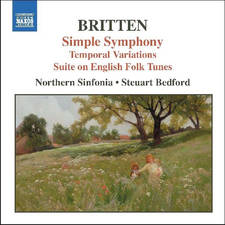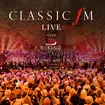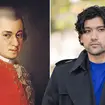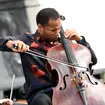10 beautiful pieces of classical music for guitar
3 May 2018, 16:24 | Updated: 3 May 2018, 16:31
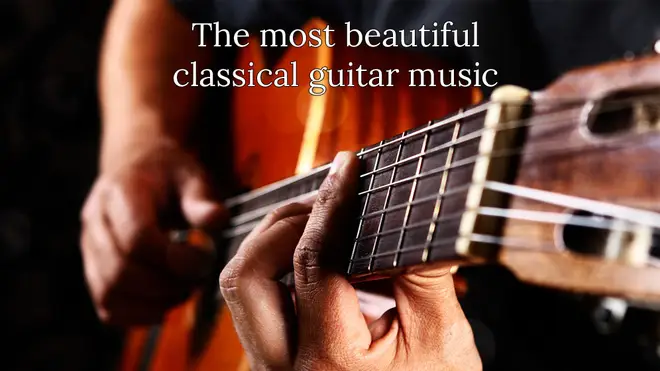
From the sultry Spanish sounds of the Concierto de Aranjuez to modern adaptations of 17th-century lute music, some of the greatest classical music sounds absolutely stunning on guitar.
1. Concierto de Aranjuez – Rodrigo
For a work as Spanish as Rodrigo’s Concierto de Aranjuez, it might seem bizarre that many people’s first encounter with it linked to Yorkshire. But the concerto’s use in the 1996 film Brassed Off! ensured that the popularity of this work sky-rocketed. The miners affectionately referred to it as ‘Orange Juice’, after finding it rather challenging to pronounce ‘Aranjuez’.
Here’s Pepe Romero, playing it beautifully:

© Concierto de Aranjuez (1939) - Joaquín Rodrigo - DRSO - Pepe Romero - Rafael Frühbeck de Burgos
2. Guitar concerto in D – Vivaldi
This wonderfully playful Baroque concerto was originally composed for a lute, but the modern transposition for classical guitar is just lovely. Although Vivaldi spent the majority of his life in Venice, this concerto comes from his globe-trotting period. It was written in Bohemia, although its three short movements were never published in his lifetime.

Concerto for Guitar in D Major (~1730) Antonio Vivaldi - Soloist Peter Varga
3. Five Bagatelles – Walton
By no means an easy piece to master, Walton’s technically fiendish ‘Five Bagatelles’ (1971) is a minefield of quirky rhythms. By the 1970s, the classical guitar was enjoying immense popularity – but the lack of Spanish/Latin associations in the Five Bagatelles meant it never achieved great prominence in 20th-century guitar repertoire.
However, listen closely and the Bagatelles, with their unruly harmonies and tonality, are wistful, beautifully shaped – and they might just be classical guitar music at its best.

Five Bagatelles - William Walton played by Sanel Redzic
4. Libertango – Piazzolla
Recorded and published in 1974 in Milan, this sultry tango marks a change in style for composer Astor Piazzolla from classical tango to nuevo tango. Spicy rhythms and a fiendish melody have kept this one at the forefront of modern Tango, with countless brilliant interpretations to explore. The original score even features an accordion, adding a folky element to the music.

Libertango by Astor Piazzolla - Joe Miller
5. Recuerdos de la Alhambra – Tárrega
Despite the seeming simplicity of its enchanting melody, Recuerdos de la Alhambra really stretches the soloist to the limit with this piece. The left-hand positions required of the guitarist are rather awkward, involving all sorts of unusual stretches – plus, the use of tremolo is a technical challenge for any performer. But at its best, Recuerdos is passionate, charming and beautifully tender.
6. Asturias – Albéniz
Despite its posthumous title, which implies a link to the northern-Spanish region of Asturias, Albéniz’s work for guitar is a clear nod to Andalusian flamenco traditions. Its sudden dynamic changes and fiddly, intricate melody make it a fiendish piece to master on guitar, but the passion it conveys is stunning. You can almost feel the dusty heat of a Spanish marketplace as you listen to the speedy strumming.

Ana Vidovic plays Asturias by Isaac Albéniz
7. Bourrée in E minor – Bach
One of the most famous pieces among guitarists, Bach’s popular ‘Bourrée’ was originally written for lute. Although it owes its name to a French dance, Bach by no means intended his Bourrée to be for dancing. However, its slick tempo and its switch from minor to major in the last chord of each verse gives it a wonderfully jaunty feel.
Plus, the Bourrée was apparently Sir Paul McCartney’s inspiration for ‘Blackbird’…

J. S. Bach: Bourree in e-minor
8. The Frog Galliard – Dowland
The galliard was a form of Renaissance dance, popular in Europe in the 16th century, and it involved a lot of jumping, leaping and hopping. But what’s unusual about this galliard is its persistent, trochaic rhythm – a stressed note followed by an unstressed one – which was an unusual feature for English composers.
No one is quite sure how John Dowland’s galliard for lute earned its animalistic name – but rumour has it, it had something to do with one of Queen Elizabeth I’s suitors, whom she affectionately referred to as her ‘frog’.

Christoph Denoth - Frog Galliard (John Dowland)
9. Prelude No. 1 – Heitor Villa-Lobos
This Prelude had a lively B section, but it’s in the sultry, yearning opening that Heitor Villa-Lobos really finds his niche. The Brazilian composer was one of the most successful Latin American composers of the 20th century, his works successfully combining Brazilian folk melodies and rhythms with Western classical music. It’s surely the unique combination of the two genres that makes section A of the Prelude No. 1 so exquisite.

Nicholas Petrou - Villa-Lobos - Prelude No. 1
10. Cavatina – Stanley Myers
It seems fair to crown Stanley Myers’ well-loved theme from the movie The Deer Hunter the most popular piece of modern classical guitar music. It was written specially for guitarist John Williams (not to be confused with the film composer), when composer Myers expanded a short piano phrase into a full piece in 1970. He called the piece ‘Cavatina’, which is Italian for a small, simple song.
Here’s Williams, doing what he does best:

Cavatina John Williams best-ever performance (live on TV)
